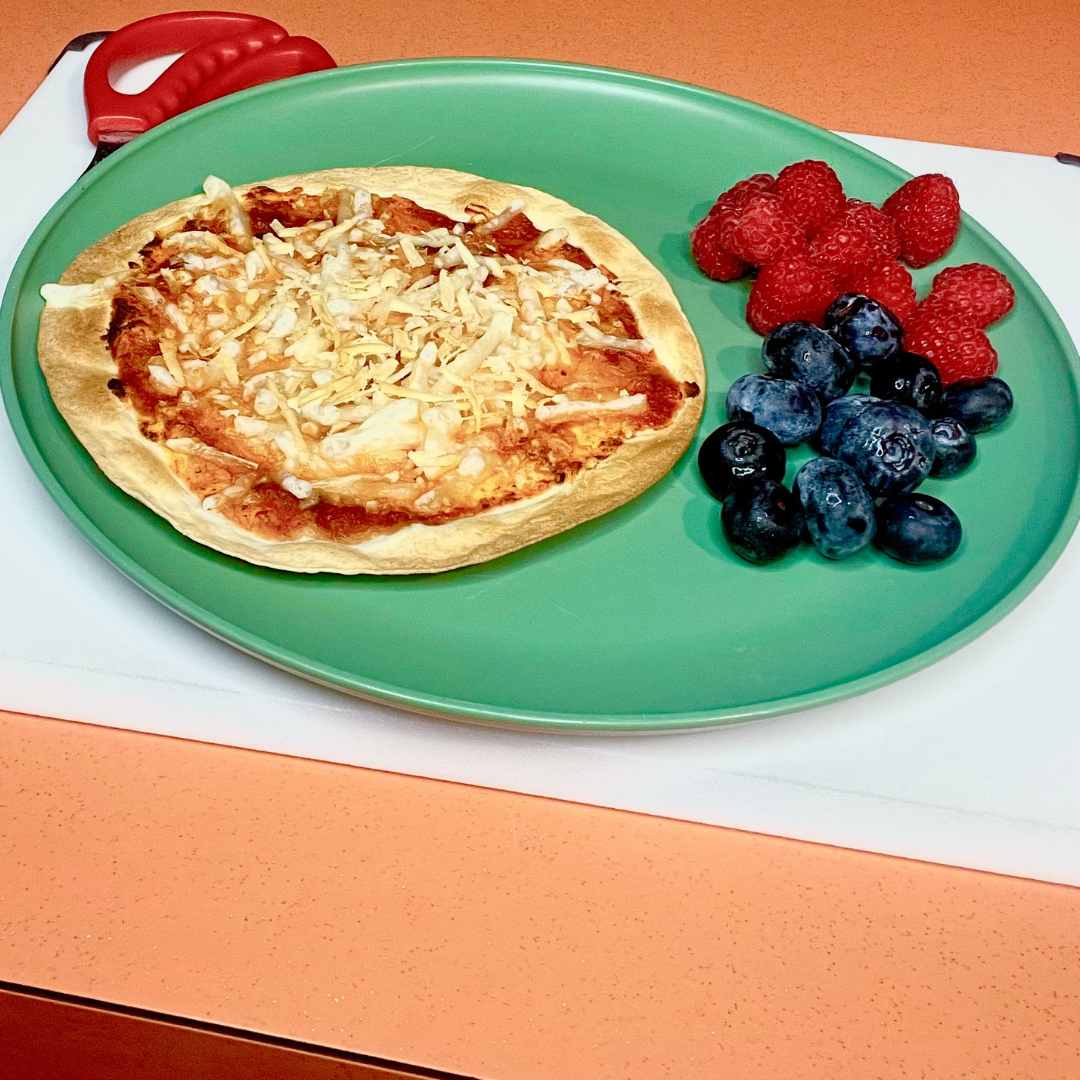Cottage cheese has long been a staple in many diets due to its versatility and unique taste. Not only does it offer a creamy and satisfying texture, but cottage cheese is also a nutrient-dense food that provides several health benefits. In this article, we will explore what cottage cheese is, its nutritional value, and its impact on overall health and gut health. We’ll also compare it to yogurt and address whether it’s suitable to include cottage cheese in your daily diet.
What is Cottage Cheese?
Cottage cheese is a type of fresh cheese made from the curds of cow’s milk. During the production process, the curds are separated from the whey and then drained, resulting in a cheese with a slightly lumpy texture. It has a mild, tangy flavor that pairs well with a variety of dishes.
Is Cottage Cheese Healthy?
Cottage cheese is considered a healthy food choice for several reasons. It is a great source of high-quality protein, containing all the essential amino acids needed for optimal bodily function. Protein helps in muscle repair and growth, boosts metabolism, and promotes satiety, making it an excellent option for those looking to manage their weight.
Additionally, cottage cheese is low in carbohydrates and relatively low in fat, making it suitable for individuals following a low-carb or low-fat diet. It is also a good source of calcium, which is essential for strong bones and teeth. Furthermore, cottage cheese provides vitamins such as vitamin B12, riboflavin (B2), and vitamin A, contributing to overall nutritional balance.
Yogurt or Cottage Cheese: Which is Healthier?
Both yogurt and cottage cheese offer unique health benefits, and the choice between them depends on personal preferences and dietary needs. Yogurt is known for its probiotic content, which promotes a healthy gut by supporting the growth of beneficial bacteria. It is an excellent option for those seeking to improve digestion and strengthen their immune system.
On the other hand, cottage cheese excels in its protein content, providing a higher protein concentration compared to most yogurts. This makes it a favorable choice for individuals aiming to increase their protein intake, such as athletes or those engaged in physical activity. It also tends to be lower in sugar than flavored yogurts, making it a good option for those watching their sugar intake.
Is it OK to Eat Cottage Cheese Every Day?
Including cottage cheese as part of your daily diet can be a healthy choice, given its numerous nutritional benefits. However, it is essential to maintain a balanced and varied diet to ensure you’re getting a wide range of nutrients from different sources. Variety is key to obtaining a well-rounded nutrient profile, so consider incorporating other protein-rich foods, such as lean meats, legumes, and fish, into your meals as well.
What to Eat Cottage Cheese With:
Cottage cheese’s versatility allows for numerous serving options. It can be enjoyed on its own or paired with various ingredients to enhance flavor and texture. Some popular options include:
- Fresh Fruits: Cottage cheese pairs well with fresh fruits like berries, peaches, or pineapple, offering a delightful combination of creamy and tangy flavors.
- Vegetables: Cottage cheese can be used as a dip for raw vegetables, such as carrot sticks, cucumber slices, or bell pepper strips, adding protein and creaminess to your snack.
- Salads: Add cottage cheese to salads for a protein boost. It works particularly well in green salads or as a topping for mixed vegetables.
- Baked Goods: Cottage cheese can be incorporated into baked goods like pancakes, muffins, or cheesecakes, providing a moist and creamy texture.
Cottage Cheese and Gut Health: Cottage cheese can contribute to a healthy gut
Cottage Cheese and Gut Health:
Cottage cheese can contribute to a healthy gut due to its probiotic properties. While it may not contain live cultures like yogurt, it still contains lactic acid bacteria that have potential benefits for the gut. These bacteria help maintain a balanced gut microbiome, which plays a crucial role in digestion, nutrient absorption, and overall immune function.
Additionally, cottage cheese is a good source of prebiotics, which are dietary fibers that serve as fuel for the beneficial bacteria in the gut. Prebiotics help promote the growth of these bacteria, supporting their ability to thrive and positively influence gut health.
However, it’s important to note that individual responses to cottage cheese and its impact on gut health may vary. Some individuals may find that cottage cheese improves their digestive well-being, while others may experience discomfort or sensitivity. As with any food, it’s best to listen to your body and make adjustments based on personal preferences and tolerances.
Conclusion:
Cottage cheese is a nutrient-rich food that offers several health benefits. It is a great source of high-quality protein, low in carbohydrates and fat, and contains essential vitamins and minerals. While yogurt and cottage cheese have their unique advantages, choosing between them depends on personal preferences and nutritional needs.
Including cottage cheese as part of a balanced diet can be beneficial, but it’s important to maintain variety and incorporate other protein sources and nutrient-rich foods into your meals. Experiment with different ways to enjoy cottage cheese, such as pairing it with fruits, and vegetables, or incorporating it into baked goods.
When it comes to gut health, cottage cheese can contribute positively due to its probiotic and prebiotic properties. However, individual responses may vary, so it’s best to pay attention to your body’s cues and make choices based on what works best for you.
Ultimately, cottage cheese is a versatile and nutritious option that can be enjoyed in various ways, offering a delicious and health-conscious addition to your diet.
Cottage cheese cheesecake:
Ingredients:
- 2 cups graham cracker crumbs
- 1/2 cup unsalted butter, melted
- 3 cups cottage cheese
- 1 cup granulated sugar
- 4 large eggs
- 1 tablespoon lemon juice
- 1 teaspoon vanilla extract
- 1/4 cup all-purpose flour
- 1/2 cup sour cream
- Fresh berries or fruit, for garnish (optional)
To prepare the cottage cheese cheesecake recipe, you will need the following equipment:
- Springform Pan: A 9-inch springform pan is recommended for this recipe. It has a removable bottom and a latch on the side, which allows you to easily release the cheesecake once it’s set.
- Mixing Bowls: You’ll need a few mixing bowls of various sizes to prepare the crust and the cheesecake filling. It’s helpful to have both a medium-sized bowl for the crust and a larger one for the filling.
- Blender or Food Processor: You will need a blender or a food processor to blend the cottage cheese and other ingredients together until smooth. This helps create a creamy texture for the cheesecake filling.
- Spatula: A spatula is useful for scraping down the sides of the blender or food processor and for smoothing the cheesecake mixture into the springform pan.
- Wire Rack: A wire rack is used for cooling the cheesecake after baking. It allows air to circulate around the pan and helps prevent the bottom from getting soggy.
- Refrigerator: You’ll need a refrigerator to chill the cheesecake for at least 4 hours or overnight. This step is important for the cheesecake to set properly.
These are the basic equipment items required for making the cottage cheese cheesecake. Additionally, you may need measuring cups and spoons, a mixing spoon or whisk, and a butter knife or offset spatula for serving.
Instructions:
- Preheat your oven to 325°F (165°C). Grease a 9-inch springform pan with butter or cooking spray.
- In a medium bowl, combine the graham cracker crumbs and melted butter. Stir until the crumbs are evenly coated. Press the mixture firmly into the bottom of the prepared pan to form the crust. Set aside.
- In a blender or food processor, blend the cottage cheese until smooth. Add the granulated sugar, eggs, lemon juice, and vanilla extract. Blend until well combined and creamy.
- Gradually add the flour, blending after each addition, until the mixture is smooth. Finally, add the sour cream and blend again until fully incorporated.
- Pour the cottage cheese mixture over the crust in the springform pan. Smooth the top with a spatula.
- Place the pan in the preheated oven and bake for about 60-70 minutes or until the edges are set but the center still jiggles slightly. The cheesecake will continue to set as it cools.
- Once baked, remove the cheesecake from the oven and let it cool completely in the pan on a wire rack. Then, refrigerate for at least 4 hours, or preferably overnight, to allow it to firm up.
- When ready to serve, carefully remove the sides of the springform pan. Garnish the cheesecake with fresh berries or fruit, if desired.
- Slice and serve chilled. Enjoy!
This cottage cheese cheesecake is a lighter and healthier alternative to traditional cheesecakes, while still being creamy and delicious. It’s perfect for any occasion or as a sweet treat anytime.
Cottage Cheese Cheesecake
Equipment
- Springform Pan: A 9-inch springform pan is recommended for this recipe. It has a removable bottom and a latch on the side, which allows you to easily release the cheesecake once it's set.
- Mixing Bowls: You'll need a few mixing bowls of various sizes to prepare the crust and the cheesecake filling. It's helpful to have both a medium-sized bowl for the crust and a larger one for the filling.
- Blender or Food Processor: You will need a blender or a food processor to blend the cottage cheese and other ingredients together until smooth. This helps create a creamy texture for the cheesecake filling.
- Spatula: A spatula is useful for scraping down the sides of the blender or food processor and for smoothing the cheesecake mixture into the springform pan.
- Wire Rack: A wire rack is used for cooling the cheesecake after baking. It allows air to circulate around the pan and helps prevent the bottom from getting soggy.
- Refrigerator: You'll need a refrigerator to chill the cheesecake for at least 4 hours or overnight. This step is important for the cheesecake to set properly.
- These are the basic equipment items required for making the cottage cheese cheesecake. Additionally, you may need measuring cups and spoons, a mixing spoon or whisk, and a butter knife or offset spatula for serving.
Ingredients
- 2 cups graham cracker crumbs
- 1/2 cup unsalted butter melted
- 3 cups cottage cheese
- 1 cup granulated sugar
- 4 large eggs
- 1 tablespoon lemon juice
- 1 teaspoon vanilla extract
- 1/4 cup all-purpose flour
- 1/2 cup sour cream
- Fresh berries or fruit for garnish (optional)
Instructions
- Preheat your oven to 325°F (165°C). Grease a 9-inch springform pan with butter or cooking spray.
- In a medium bowl, combine the graham cracker crumbs and melted butter. Stir until the crumbs are evenly coated. Press the mixture firmly into the bottom of the prepared pan to form the crust. Set aside.
- In a blender or food processor, blend the cottage cheese until smooth. Add the granulated sugar, eggs, lemon juice, and vanilla extract. Blend until well combined and creamy.
- Gradually add the flour, blending after each addition, until the mixture is smooth. Finally, add the sour cream and blend again until fully incorporated.
- Pour the cottage cheese mixture over the crust in the springform pan. Smooth the top with a spatula.
- Place the pan in the preheated oven and bake for about 60-70 minutes or until the edges are set but the center still jiggles slightly. The cheesecake will continue to set as it cools.
- Once baked, remove the cheesecake from the oven and let it cool completely in the pan on a wire rack. Then, refrigerate for at least 4 hours, or preferably overnight, to allow it to firm up.
- When ready to serve, carefully remove the sides of the springform pan. Garnish the cheesecake with fresh berries or fruit, if desired.
- Slice and serve chilled. Enjoy!




